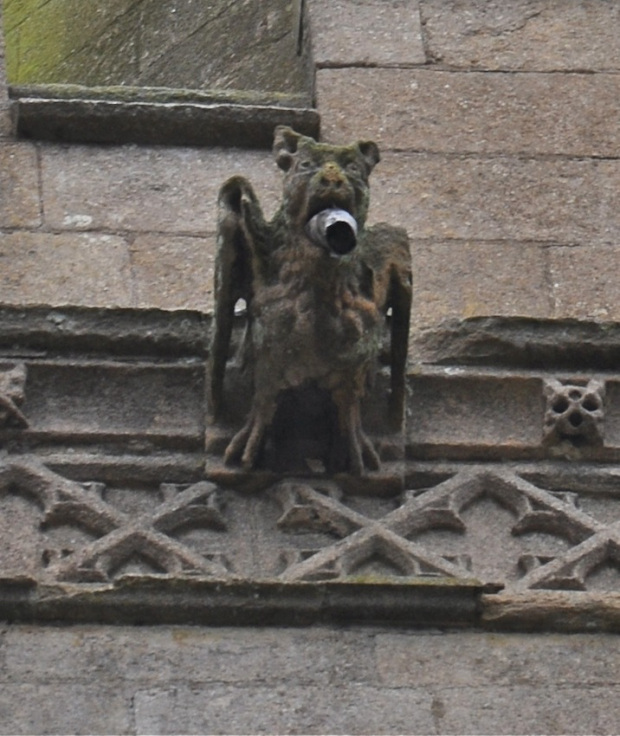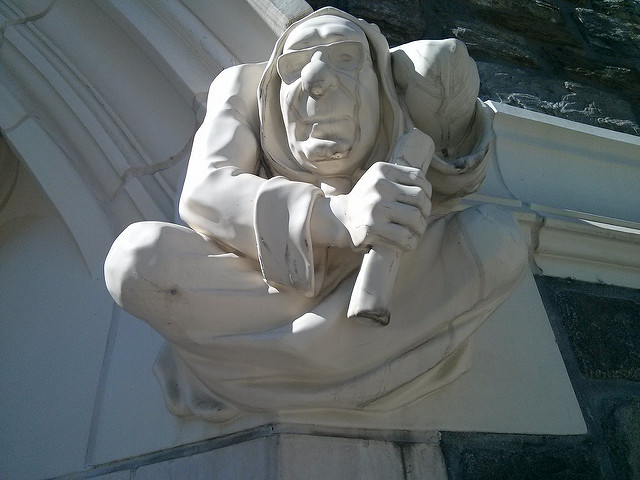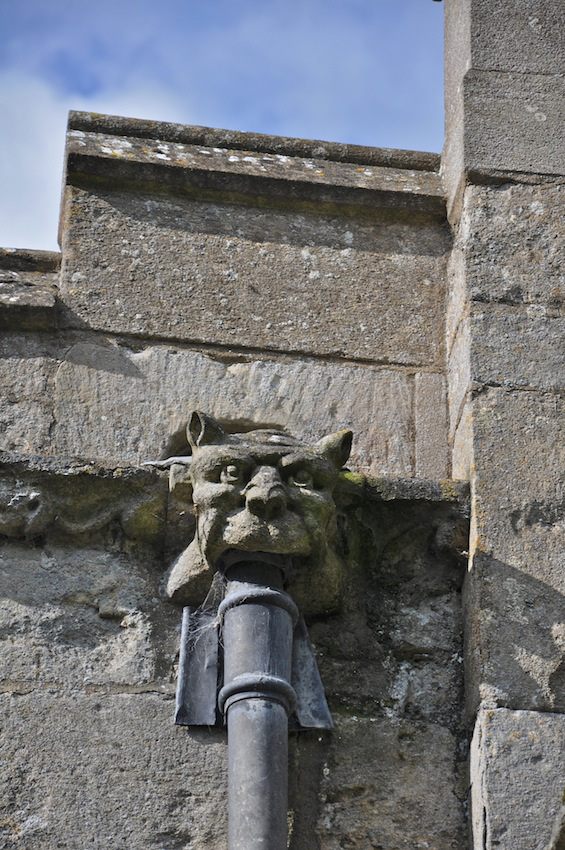Field Guide to Gargoyles, Part Four
Welcome back to the Field Guide to Gargoyles. Here, you’ll find everything you’ve ever wanted to know about gargoyles and grotesques. To recap, so far we have defined gargoyles and grotesques, learned where they originated, and found out where to look for them. To be a successful gargoyle hunter, however, you need one more piece of information – what they look like. That’s the subject of today’s post.
What do gargoyles and grotesques look like?
Gargoyles and grotesques may appear in any number of guises, including, animals (often anthropomorphized), hybrid animals, monsters, faces, and humans. This last category is sometimes caught in ridiculous or crude acts.

Gargoyles and grotesques of the Gothic and Gothic Revival eras tend to be stylistically quite similar. More recent ones (19th century through the present) may also have a Gothic appearance but can also appear quite differently. Gargoyles and grotesques of all eras are in the habit of fitting into their surroundings, so they take on minimalist or modernist aesthetics on buildings of those styles. Similarly, newer figures often represent modern-looking characters (judge by hairstyles, clothing, and props), pop-culture or movie personalities, college mascots, etc. Just as in any other artistic field, however, there are also young traditionalists.

Gargoyles and grotesques most frequently made of stone, typically matching the buildings they inhabit. Any that are made of metal or another non-stone substance are most likely less than 200 years old, though a metal pipe coming out the mouth of a stone gargoyle can also be the sign of restoration to an older creature. In order to serve their function as drain spouts, gargoyles must have openings – often but not always though the mouth – through which water can flow. The addition of a pipe may facilitate this process.
It’s important to realize that a gargoyle is not a type of creature, no matter what popular culture and the cartoons may want to suggest. There are no visual or physical characteristics common to all gargoyles and no real common aesthetic, either. Yes, there is definitely a stereotypical sort of monstrous, fantastical, hybrid sort of creature that we might most commonly associate with the idea of a gargoyle and might be tempted to give that name. However, not all architectural gargoyles look like that. In particular, gargoyles that aren’t from medieval Europe or the Gothic Revival almost never have that stereotypical appearance. Thus, you’ll overlook a lot of cool gargoyles if you don’t acknowledge that.

Now that we know where and what to look for when gargoyle hunting, it’s almost time to tackle a much trickier question… What do gargoyles mean? Do we even know? Check back next week.
Read the rest of the Field Guide to Gargoyles here!


